Themed collection Best Papers 2020 – Environmental Science: Nano

Harmonizing across environmental nanomaterial testing media for increased comparability of nanomaterial datasets
The chemical composition and properties of environmental media determine nanomaterial (NM) transport, fate, biouptake, and organism response.
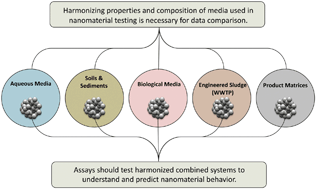
Environ. Sci.: Nano, 2020,7, 13-36
https://doi.org/10.1039/C9EN00448C
Strategies for determining heteroaggregation attachment efficiencies of engineered nanoparticles in aquatic environments
Heteroaggregation of engineered nanoparticles with suspended particulate matter in theory and practice: a roadmap for understanding and determining attachment efficiencies.
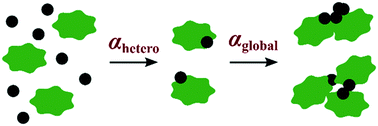
Environ. Sci.: Nano, 2020,7, 351-367
https://doi.org/10.1039/C9EN01016E
The gut barrier and the fate of engineered nanomaterials: a view from comparative physiology
Despite the diverse structures and functions of the gut barrier in the animal kingdom, some common features of gut lumen chemistry control the behaviour of engineered nanomaterials, and with some potentially novel uptake pathways in invertebrates.
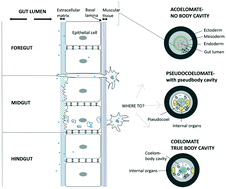
Environ. Sci.: Nano, 2020,7, 1874-1898
https://doi.org/10.1039/D0EN00174K
What will happen when microorganisms “meet” photocatalysts and photocatalysis?
In recent years, photocatalytic technology has been widely studied as an environmental restoration technology and energy production technology to solve the two crises of energy shortage and environmental pollution.
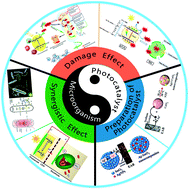
Environ. Sci.: Nano, 2020,7, 702-723
https://doi.org/10.1039/C9EN01318K
Inorganic salts and organic matter effects on nanorod, nanowire, and nanoplate MoO3 aggregation, dissolution, and photocatalysis
Inorganic salts (NaCl and CaCl2) and organic material (humic acid and extracellular polymeric substances) have differing effects on the aquatic stability and photocatalytic activity of structurally different MoO3 materials.
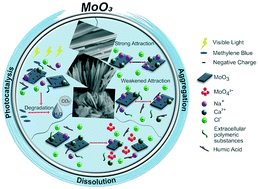
Environ. Sci.: Nano, 2020,7, 3794-3804
https://doi.org/10.1039/D0EN00708K
Comparative physiological and metabolomics analysis reveals that single-walled carbon nanohorns and ZnO nanoparticles affect salt tolerance in Sophora alopecuroides
Using physiology and metabolome analyses, we showed the promoting effects of single-walled carbon nanohorns and ZnO nanoparticles on plant growth and salt tolerance in Sophora alopecuroides seedlings.
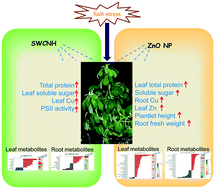
Environ. Sci.: Nano, 2020,7, 2968-2981
https://doi.org/10.1039/D0EN00582G
Curvature-induced hydrophobicity at imogolite–water interfaces
The curvature of the imogolite external surface induces changes in its hygroscopic properties as compared to its planar counterpart gibbsite.
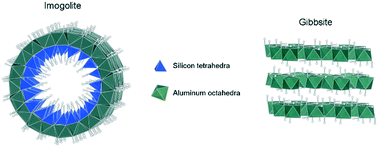
Environ. Sci.: Nano, 2020,7, 2759-2772
https://doi.org/10.1039/D0EN00304B
Polystyrene nanoplastics accumulate in ZFL cell lysosomes and in zebrafish larvae after acute exposure, inducing a synergistic immune response in vitro without affecting larval survival in vivo
Polystyrene nanoplastics are internalized in zebrafish liver cells, accumulating in lysosomes, and in zebrafish larvae but do not affect the larval suvival to a lethal infection.
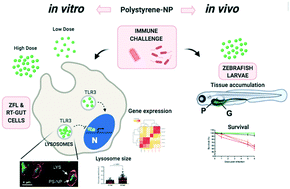
Environ. Sci.: Nano, 2020,7, 2410-2422
https://doi.org/10.1039/D0EN00553C
Hierarchically porous electrospun nanofibrous mats produced from intrinsically microporous fluorinated polyimide for the removal of oils and non-polar solvents
An electrospun nanofibrous adsorbent with micro-, meso- and macropores and surface area of 565 m2 g−1 was developed for the rapid removal of crude oil from seawater.
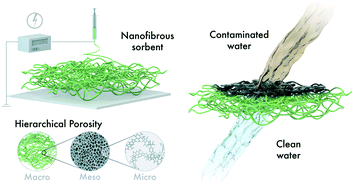
Environ. Sci.: Nano, 2020,7, 1365-1372
https://doi.org/10.1039/D0EN00084A
Exposure medium and particle ageing moderate the toxicological effects of nanomaterials to Daphnia magna over multiple generations: a case for standard test review?
Pristine engineered nanomaterials (NMs) entering the aquatic environment become ‘aged’ during their lifetime via chemical, physical and/or biological process.
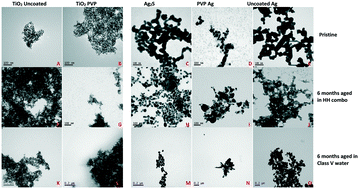
Environ. Sci.: Nano, 2020,7, 1136-1149
https://doi.org/10.1039/D0EN00049C
Emerging investigator series: ion diffusivities in nanoconfined interfacial water films contribute to mineral carbonation thresholds
Mineral carbonation reactivity trends and thresholds in nanoconfined water films delineated with in situ X-ray diffraction and molecular simulations.
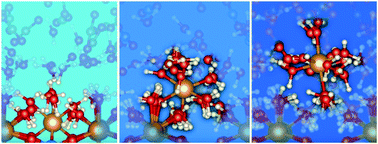
Environ. Sci.: Nano, 2020,7, 1068-1081
https://doi.org/10.1039/C9EN01382B
Smectite clay pillared with copper complexed polyhedral oligosilsesquioxane for adsorption of chloridazon and its metabolites
Copper complexed polyhedral oligomeric silsesquioxane pillared smectite clay (Cu2+@POSS_SWy-2) exhibits excellent adsorption properties for chloridazon and its metabolites.

Environ. Sci.: Nano, 2020,7, 424-436
https://doi.org/10.1039/C9EN00974D
Release of TiO2 nanoparticles from painted surfaces in cold climates: characterization using a high sensitivity single-particle ICP-MS
Wet, cold or freeze-thaw conditions enhanced the release of TiO2 nanoparticles from outdoor painted surfaces.

Environ. Sci.: Nano, 2020,7, 139-148
https://doi.org/10.1039/C9EN00951E
Efficient removal of metal ions by capacitive deionization with straw waste derived graphitic porous carbon nanosheets
Graphitic porous carbon nanosheets derived from straw waste were developed for capacitive deionization.

Environ. Sci.: Nano, 2020,7, 317-326
https://doi.org/10.1039/C9EN01233H
Nanoplastics as a potential environmental health factor: effects of polystyrene nanoparticles on human intestinal epithelial Caco-2 cells
Our results show that both nPS are easily internalized by Caco-2 cells in a concentration-dependent manner, but no relevant toxic effects are observed under the analyzed exposure conditions.
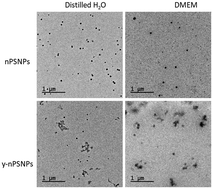
Environ. Sci.: Nano, 2020,7, 272-285
https://doi.org/10.1039/C9EN00523D
The distinct role of boron doping in Sn3O4 microspheres for synergistic removal of phenols and Cr(VI) in simulated wastewater
Boron doped Sn3O4 microspheres constructed from nanoplates with an unexpected synergistic effect upon simultaneous removal of phenols and Cr(VI) in simulated wastewater.
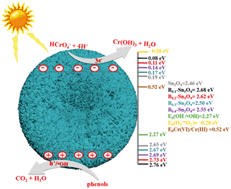
Environ. Sci.: Nano, 2020,7, 286-303
https://doi.org/10.1039/C9EN00899C
About this collection
The Environmental Science Best Papers Initiative identifies a variety of excellent papers published in the Royal Society of Chemistry’s Environmental Science journal family, showcasing great research from across the globe. To celebrate more of the great papers published in Environmental Science: Nano during 2020 which really deserve recognition, we’ve gathered all nominated papers in this special collection.